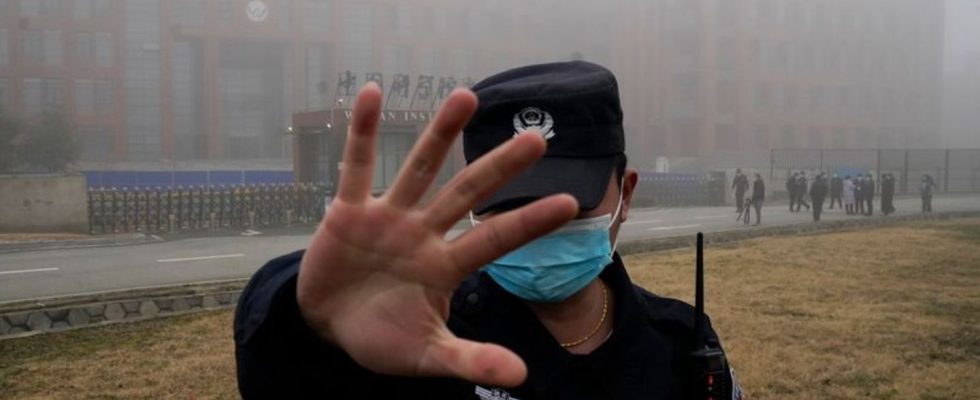Drones and chicanery
China hinders the work of foreign journalists
A security guard prevents journalists from doing their work in Wuhan (archive image). 99 percent of journalists who took part in the survey said conditions in China rarely or never meet international standards for reporting. photo
© Ng Han Guan/AP/dpa
China is seen as a difficult place for foreign correspondents, who complain of surveillance, intimidation and obstruction. Will the Chancellor address the problems during his visit to Beijing?
Despite easing after the corona pandemic, foreign journalists are suing According to a survey, China continues to have difficult working conditions. 81 percent of the members of the Foreign Correspondents’ Club in China (FCCC) said that the conditions in 2023 had improved slightly compared to the pandemic period. However, due to the regained mobility, reporters again had problems with independent reporting on site, which had already been complained about before Corona, as stated in the report published in Beijing.
Intimidation and surveillance remain significant barriers, according to the annual survey, which included 101 of 157 FCCC members. 81 percent answered that they had experienced harassment or violence. As in the previous year, just over half said that police or authorities had hindered them at work at least once. Chinese employees in the correspondent offices also experienced pressure from the state. 49 percent, slightly more than in 2022 (45 percent), said they had been intimidated or put under pressure at least once.
In the past, the federal government has repeatedly advocated for better working conditions for German correspondents in China. Chancellor Olaf Scholz (SPD) is traveling to China on a visit at the weekend. It is his second visit to Beijing as Chancellor. After stops in Chongqing and Shanghai, Scholz will meet with state and party leader Xi Jinping and head of government Li Qiang in the Chinese capital on Tuesday, as the federal government announced.
Problems especially in sensitive regions
Disabilities are particularly reported in areas that are politically sensitive from the state’s perspective. The survey shows that 85 percent of foreign journalists who tried to report from the northwestern Chinese region of Xinjiang had problems. The region inhabited by the Muslim Uyghur minority is repeatedly in the headlines due to human rights violations. The Uighurs complain about oppression. Beijing rejects the allegations.
According to the FCCC, the list of politically sensitive areas even appeared to have expanded. Reporters in areas bordering Russia and Southeast Asian countries, as well as in regions with ethnic minorities such as Inner Mongolia, reported increasing problems with their reporting. The survey showed for the first time that authorities are also using drones to monitor media representatives.
It’s not just journalists who are affected
However, pressure from the authorities was also directed against journalists’ sources. 82 percent of the correspondents surveyed said that interviewees had canceled the interview – citing the fact that they were not allowed to speak to foreign media or had to obtain permission to do so.
Some journalists don’t even make it to China: According to the survey, media outlets, especially from the USA, continued to have problems even obtaining visas for their reporters. In addition, almost all of them, 99 percent, said that the conditions in China hardly or never met international standards for reporting.
The Communist Party-ruled People’s Republic, which is one of the two most populous countries alongside India with 1.4 billion inhabitants and the second largest economy in the world, has been considered a difficult reporting area for many years. The organization Reporters Without Borders ranked China 179th out of 180 in its press freedom ranking in 2023. The situation was only worse in North Korea. According to its own information, the FCCC has 157 members from Asia, Europe, Latin and North America.

